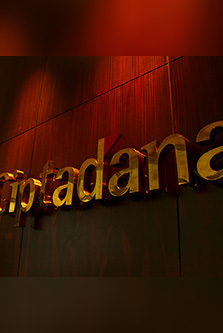- Tentang Kami

Profile
Didirikan oleh Irene Maya Hambali dan Catherine Gina Hambali pada tahun 1990, Ciptadana telah berkarya selama 25 tahun dalam membantu orang – orang membangun bisnis mereka, melindungi aset mereka dan meningkatkan kekayaan mereka.

Direksi dan Dewan Komisaris
Direksi dan Dewan Komisaris perusahaan Ciptadana Sekuritas Asia




- Produk Jasa

Saham Produk Jasa
Tim sales dan trading Ciptadana adalah unit yang berfokus pada klien, melaksanakan perintah klien seefisien dan sekompetitif mungkin dengan tetap menjaga agar trading desks klien tetap terinformasi dengan stock dan market info yang relevan.

Obligasi Produk Jasa
Kami menyediakan asset finansial ke bank – bank, perusahaan asuransi, reksadana, dan juga klien – klien korporasi maupun ritel.

Penjamin Emisi Produk Jasa
Kami memastikan bahwa klien sudah memenuhi semua ketentuan regulasi, seperti pendaftaran pada badan yang tepat, dan menyajikan seluruh data finansial yang diperlukan kepada publik.

- Cara Berinvestasi

Saham Berinvestasi
Cara Berinvestasi terdiri dari dua syarat menurut jenis rekening yang terdiri dari Rekening Efek Regular dan Obligasi serta Rekening Efek Marjin.

Obligasi Berinvestasi
Cara Berinvestasi terdiri dari dua syarat menurut jenis rekening yang terdiri dari Rekening Efek Regular dan Obligasi serta Rekening Efek Marjin.

Agen Penjual Reksadana Berinvestasi
Cara Berinvestasi terdiri dari dua syarat menurut jenis rekening yang terdiri dari Rekening Efek Regular dan Obligasi serta Rekening Efek Marjin.

FAQ
Berinvestasi saham berarti anda turut mempunyai, kepemilikan terhadap suatu perusahaan. Dengan berinvestasi atau memiliki saham suatu perusahaan anda berhak untuk mendapatkan keuntungan dari pembagian deviden.
- Unduh Formulir
- Hubungi Kami
- Online Registration

Online Registration Individu
Melalui online registration individu calon nasabah Ciptadana Securities dapat mengajukan permintaan untuk membuka rekening individu secara online.

Online Registration Institutional
Melalui online registration institutional calon nasabah Ciptadana Securities dapat mengajukan permintaan untuk membuka rekening institusi secara online.

Permintaan Fitur Market Info
Nasabah terdaftar? Jika ya, anda dapat menggunakan fitur Market Info dengan mengajukan penambahan fitur Market Info untuk akun anda.
